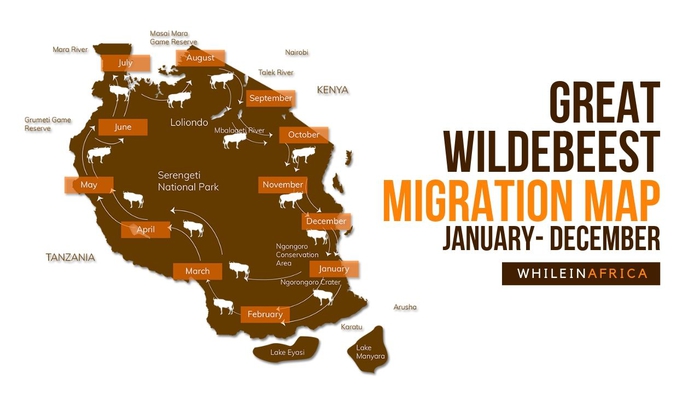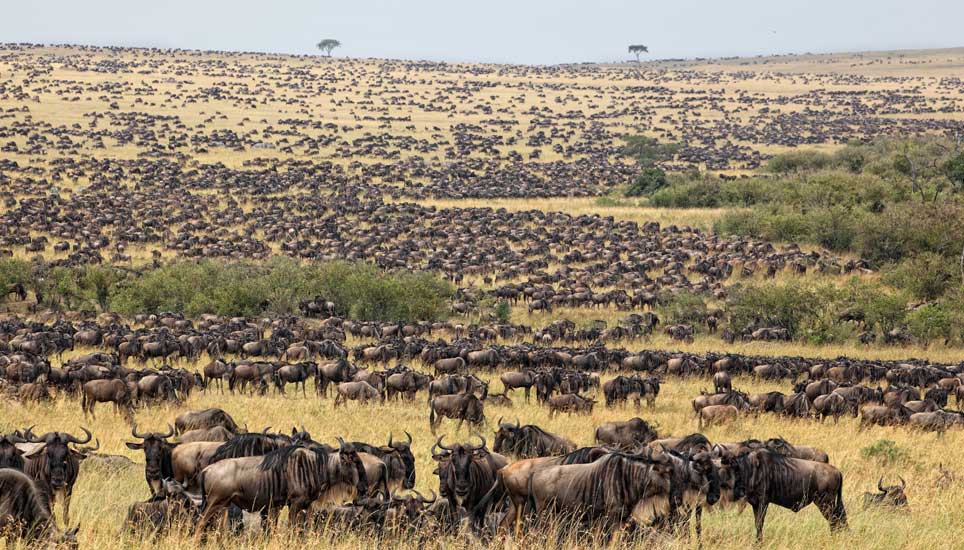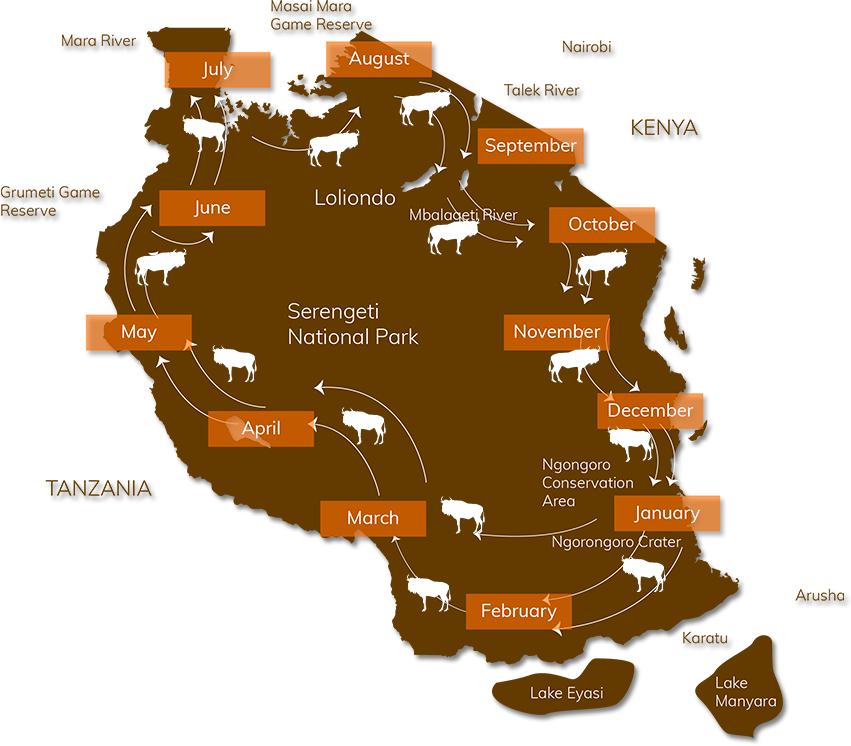Wildebeest migration routes are the paths or patterns throughout the year of the great wildebeest migration as it happens in Serengeti National Park Tanzania looking to cross to Masai Mara National Reserve Kenya. The Wildebeest Migration, also called the Great Wildebeest Migration or Serengeti Wildebeest Migration, is one of the most exciting natural wonders of the world that travellers from all walks of life wish to witness and thus visit Tanzania Safari to experience. Safari enthusiasts have an opportunity to witness the Great Wildebeest Migration in Tanzania or Kenya, coming up-close with this world spectacle.

What is the Wildebeest Migration?
The wildebeest migration is an annual movement of over 1.5 million wildebeests, zebras, gazelles and impalas among other grazers through the Serengeti National Park Tanzania to Masai Mara National Park Kenya. The great wildebeest migration is the largest on-land animal migration in the world, that witnessing it is a spectacle that you shall enjoy and always remember. The Great Wildebeest Migration is a year-round phenomenon usually dictated by the rains seeing the herds moving in a frenzy clockwise motion throughout the Serengeti National Park and Masai Mara National Reserve Kenya. Knowing the wildebeest migration routes helps you know where the migration would be during which time of the year, when you do visit Tanzania or Kenya. Below are the patterns or wildebeest migration routes that shall help you mark when the Great Wildebeest Migration is expected in which period;
January, February and March Wildebeest Migration Routes
Over 1.5 million wildebeests, also called the Gnu as well as thousands of zebras, impalas, gazelles spend their first months of the year in the Serengeti Plains feeding on short grass. This wildebeest migration route is when the Calving Season happens. As the southern plains of the Serengeti National Park Tanzania become picked over, the herds of the migration start spreading west in preparation to migrate north in the spring.
Serengeti Migration safaris in this time of the year has you the traveller getting an opportunity to witness the great wildebeest migration especially the calving season where thousands of calves are born. This is a good time to witness the predator action, as predators like lions and leopards take advantage of the weak calves as they are newly born thus preying on them, with the adult female wildebeests protecting their new-borns. Lions, cheetahs, leopards, hyenas and even the rare wild dogs can be easily spotted here.

Towards the end of the short dry season which ends in the month of March, the short grass of Serengeti National Park here in the southern part of Serengeti dry out and thus has the migration herds start moving towards the western corridor of Serengeti National Park.
April and May Wildebeest Migration Route
The April and may migration route is one of the wildebeest migration routes in Serengeti National Park, sees the thousands of wildebeests make their trek across the western corridor heading north. The wildebeest migration moves through the Ndoha and Dutwa plains which are adjacent the Mbalageti River. Herds are seen usually starting to pile up near the Mbalageti River and the Grumeti River awaiting one of the most dramatic river crossing, which is also one of their most dangerous and serious obstacle.
June, July and August Migration Route
The mating season starts usually in the month of June. Expect to witness fierce fighting between competitive males as they vie for the attention of the females. In the month of July, the herds head northwards towards the fresher grass of the Masai Mara National Reserve. To get there however they have obstacles to face with the first being crossing the Grumeti River.
The iconic river crossings usually start in the month of July, but timings are still unpredictable. The wildebeests form a mega-herd as they look to attempt to cross the Grumeti River to continue northwards, with the treacherous crocodiles in the water whilst predators like lions, cheetahs and leopards lurk at the river banks. This is a survival for the fittest spectacle, which is actually their first, before facing the Mara River.

September and October Migration Route
This is a great time to be in the Masai Mara National Reserve Kenya. The migrating herds cross to Masai Mara National Reserve through the Mara River. As the rains begin in the month of October the herds begin their journey yet again back to the Serengeti National Park Tanzania.
November and December Migration Patterns
With the short rains received in the month of October in Tanzania, the grass starts growing again thereby literally calling back the wildebeest migration to the southern part of the Serengeti National Park which they find all lush and green. And the cycle repeats yet again.
With the above wildebeest migration routes, you can now plan out your migration safari adventure clearly and knowing what to expect where. Get in touch with a reputable tour operator to help you pitch together an amazing Serengeti migration safari, or Kenya migration safari.


